Relic
Scott Lawrie @silo6
〰️
Auckland, NZ
〰️
July 2022
〰️
Scott Lawrie @silo6 〰️ Auckland, NZ 〰️ July 2022 〰️
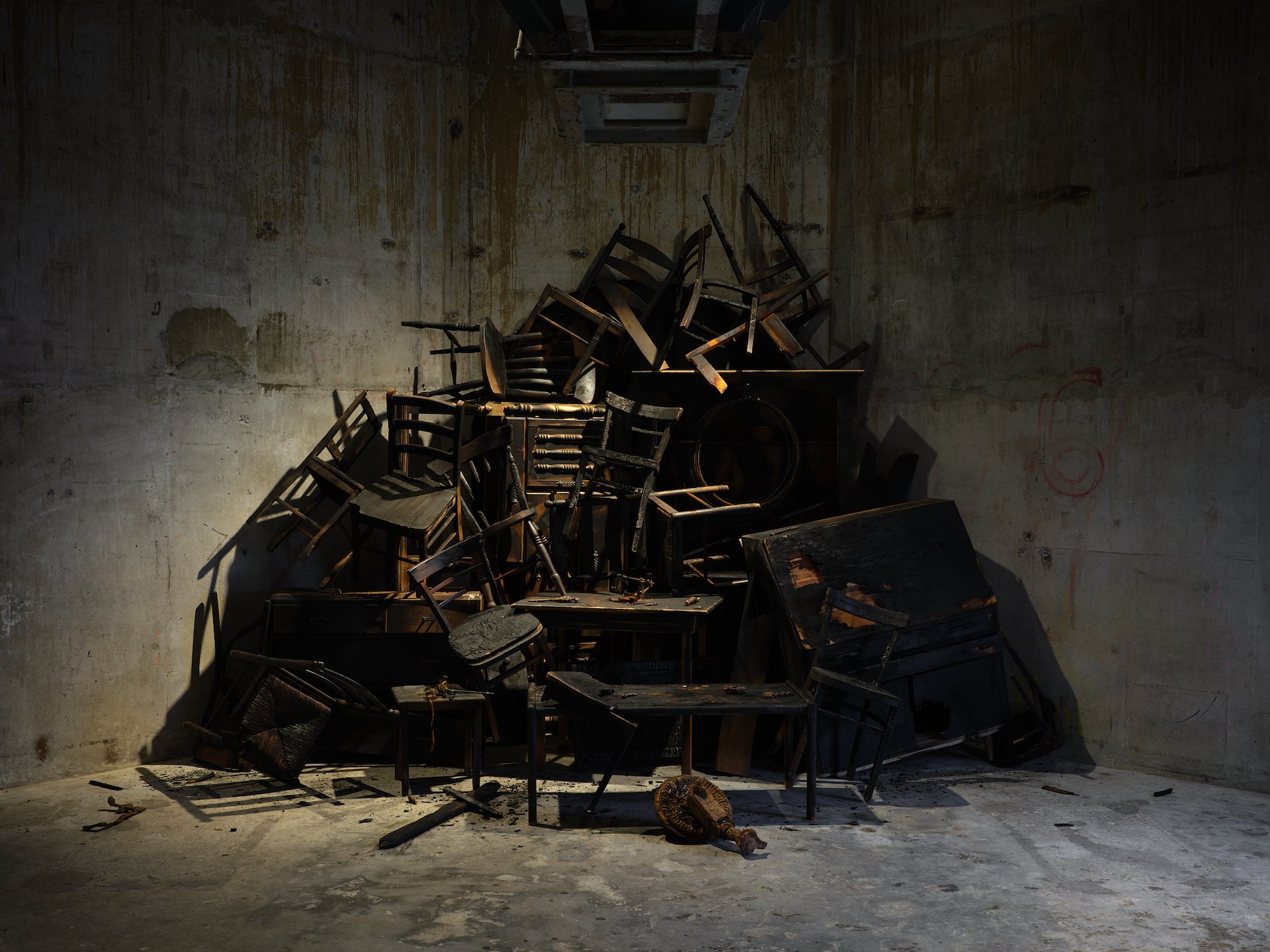
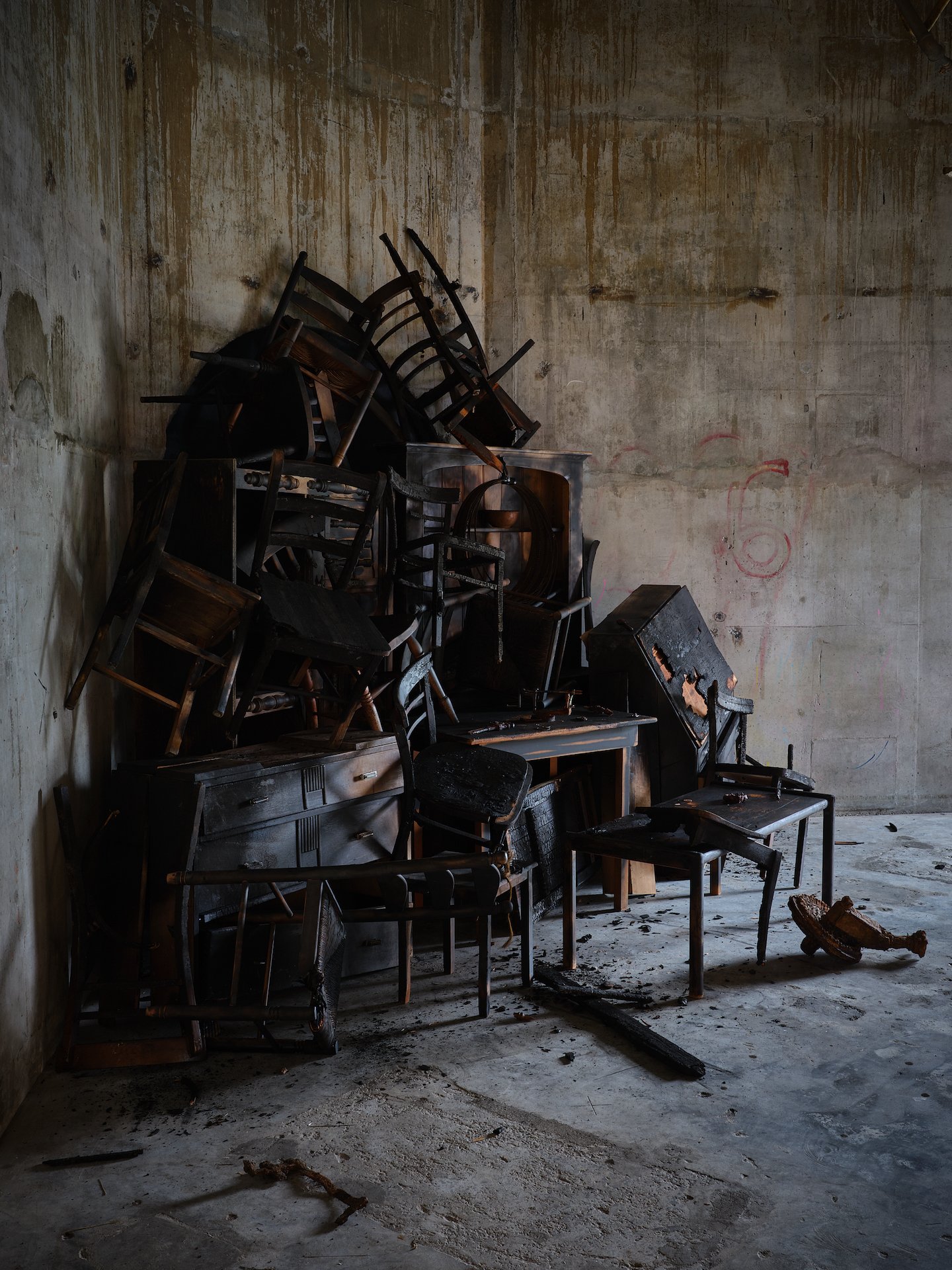
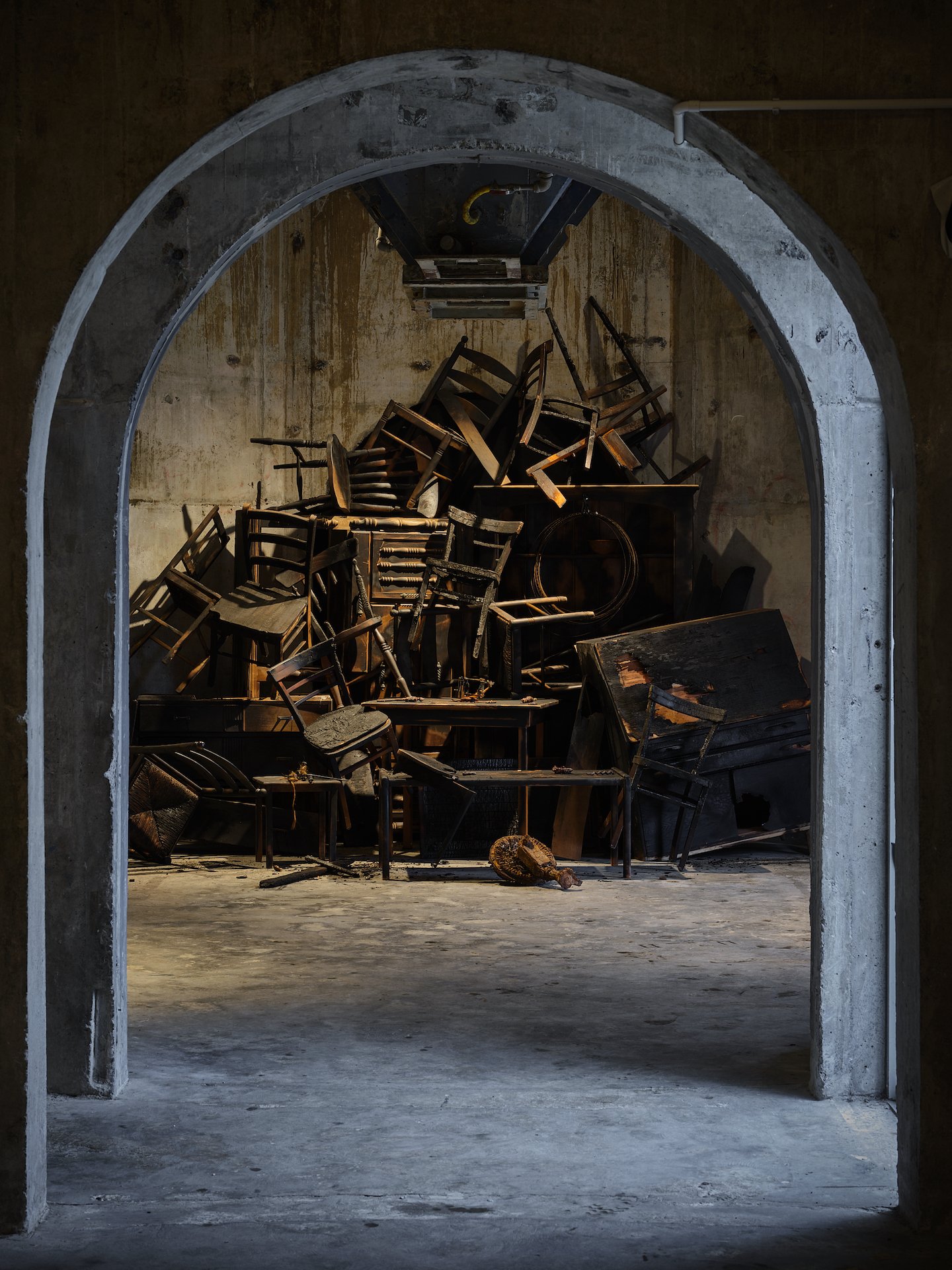
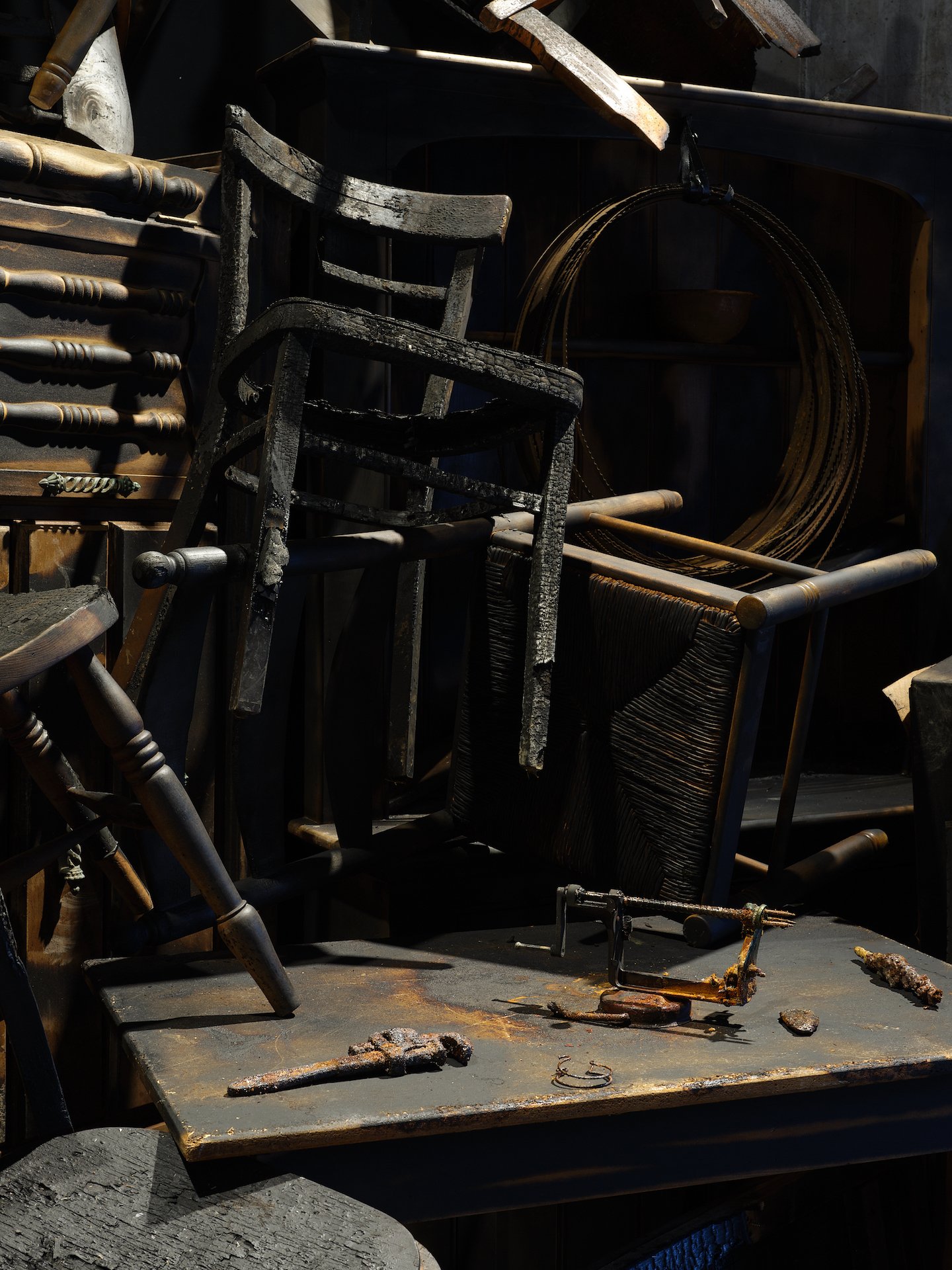
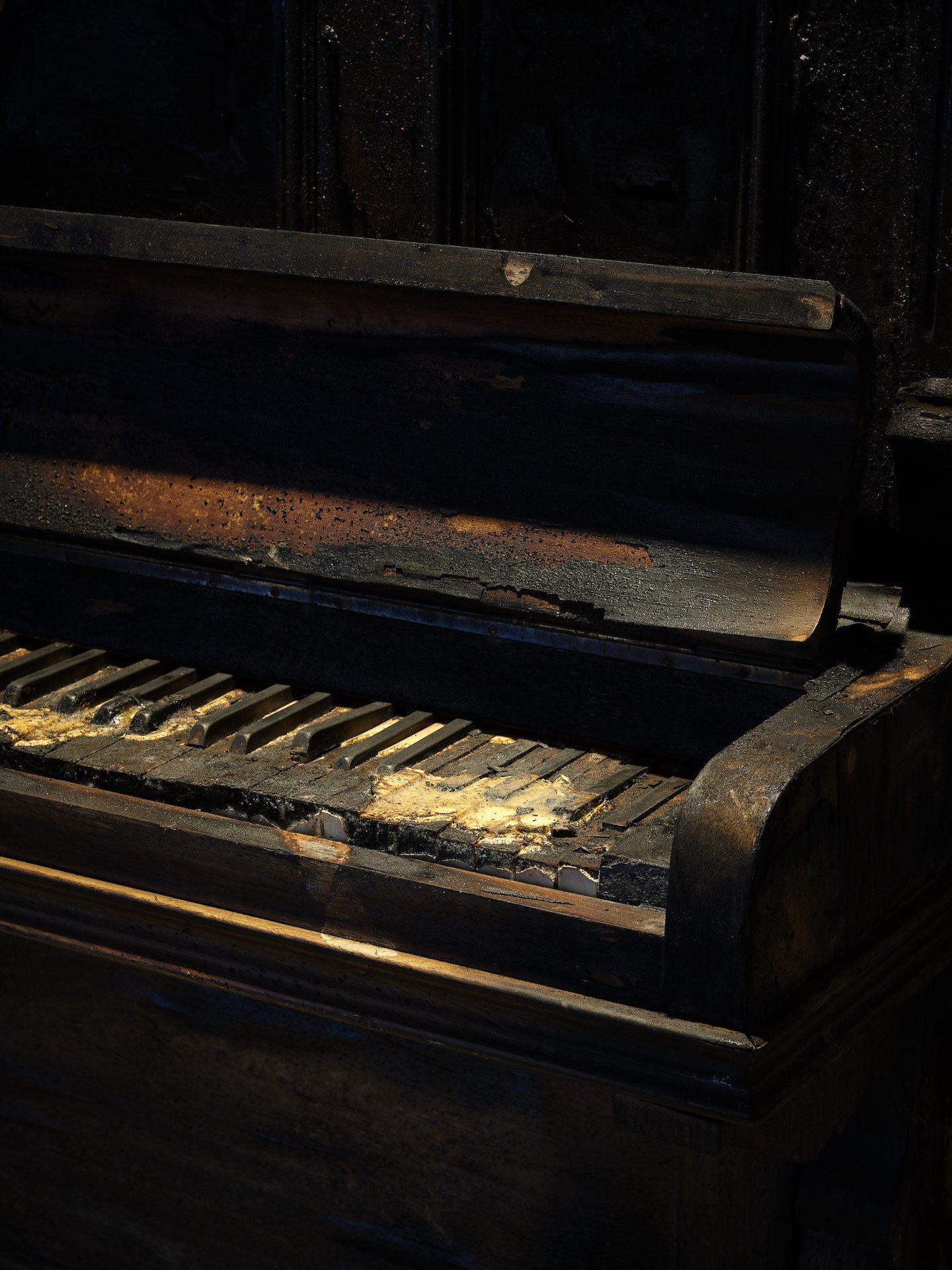
A re-imagining…
The furniture in this work, whilst modern in design, was hand-picked for a resemblance to medieval Scottish furnishings. Likewise, the (harmless) modern tools have been aged and oxidised by the artist to appear as torture devices from the dark ages. This mix of old and new shines a light on the cyclic nature of human modes of social control; feudalism meets capitalism. Two related economic models, both of which exploit subordinate classes.
Yes, the piece has literal threads of connection to Isobel Gowdie’s life and times; the furniture, burnt as many a witch, modern tools which bear resemblance to possible torture devices, but beyond this, the artist attempts to wade into deeper concerns. Could Gowdie’s confession have represented an individual struggle against the overarching control of the feudal system? An embrace of death to protest disparities of wealth and power?
Death can be viewed as a powerful abstraction that frames the entirety of life. Could its acceptance almost be a counter-abstraction to capitalism? Capitalism, with its sense of smooth infinitude, stultifying, and impossible, has no sense of authentic struggle, no negative side. An embrace of death might embody a kind of anti-capitalist consciousness, a challenge through impurity and negation. And so, the artist presents a material challenge to normativity both for the present and the past.
— Fillary, Relic
Photography by Samuel Hartnett